I was scrolling through social media recently when I spotted a photo of what someone described as a ‘collapsed quarry bothy’ perched on the cliffs at Longhaven in Aberdeenshire.
It looked impossible to reach – and I wouldn’t dare risk my life trying – but I was desperate to at least catch sight of it.
And so I set off for a walk along the rugged cliffs at Longhaven – cliffs which hold an irresistible draw for climbers, birdwatchers, sightseers and ramblers alike.
It’s worth noting that the cliffs have claimed many lives over the years, and it doesn’t take a rocket scientist to work out why.
Grass slopes which skirt the cliff face appear to slope gently towards the edge, but they’re extremely slippery, especially when wet.
Any fall is sure to cause serious injury at the very least, so straying from the path is definitely not recommended.
Where is the best place to park?
I parked up at Longhaven Cliffs Nature Reserve and walked down towards the sea, passing a ruined house and a huge water-filled quarry from which the area’s famous pink-red granite had once been excavated.
After navigating a flight of wooden steps, I passed a perilous-looking finger of land jutting out into the sea, with signs warning people not to venture there.
I peered over a line of fencing to get a better view and instantly withdrew – chunks of grass, turf, rocks and earth have been wrenched from the edges of the cliffs.
It’s not somewhere you want to hang around.
Shuddering, I carried on, keeping an eye out for a memorial to two climbers who fell to their death on the cliffs here in 1967.
How to spot the quarry bothy
It wasn’t long before I found it, and it was from here that I spotted the old quarry bothy.
It’s a mind-boggling and vertigo-inducing sight.
The bothy was supposedly used by quarry workers right up until the 1960s to store tools, and acted as a shelter during bad weather.
Look closely and you might spot a dark stain on a cliff below the bothy – it’s thought there was once an iron ladder there that workers climbed up.
Locally, I’ve heard stories of daredevils climbing down ropes to reach the bothy, but I would never dream of doing that. I’m keen to stay alive for as long as possible!
I hugged the cliffs, taking photos of the roofless bothy from all angles, the crash and roar of waves below acting as a soundtrack.
It certainly must have been a tough existence for the quarry workers.
Landscape shaped by quarrying
The lunar landscape, with rocks scattered across the reserve’s clifftops, is the result of extensive quarrying for granite over the decades.
Nature is reclaiming the area with shrubs, heathers and grasses growing and quarried patches filling in with water.
Looking north, I spotted the majestic Buchan Ness lighthouse at Boddam, its red and white tower prominent for miles around.
Sea stacks, caves and arches also catch the eye, and there are fantastic views of seabird colonies, including puffins.
You might spot some if you’re very lucky, but the best time to do that is during their breeding season, which takes place between April and July.
There’s marine life galore here, too. I noticed a seal swimming close to rocks below the cliffs: colonies often bask here.
Look out for Slains Castle
Looking south I spotted the jagged ruins of Slains Castle, said to be the inspiration for Bram Stoker’s Dracula.
Had I carried on south along the path I’d have first reached the Bullers of Buchan – an impressive collapsed sea cave – and then onto Slains and the village of Cruden Bay.
Instead, I headed north towards Boddam, and came across a few strange derelict buildings.
A few, I assume, were in some way connected to the old quarry, but further inland was what I’ve been told was a fisherman’s house.
Inside it I found a water-damaged painting and lantern, alongside a tribute to someone who died a few years ago.
I also popped my head into a few abandoned farmsteads, two of which appeared to have been fire-damaged.
Historic railway
A path meanders along the clifftops, soon reaching an old railway track bed, running parallel with the coastal path.
There’s an old and rather dilapidated railway bridge to be discovered, too, but a sign warns you to avoid crossing it.
Back to my original mission – of discovering the abandoned quarry workers’ bothy set into the cliffs.
If any readers have any more information about it, or indeed, old photos of it, please do get in touch.
- Great care should be taken if walking at Longhaven Cliffs. Some sections of the path come terrifyingly close to cliff edges, leaving no room for clumsiness.
- There’s a memorial to James Paterson and Alexander Hamilton, two students who died while climbing here in 1967, but many more people have died.
- Several teenage boys were killed on the cliffs during the 1930s when they were ‘bird-nesting’ – essentially collecting birds’ eggs.
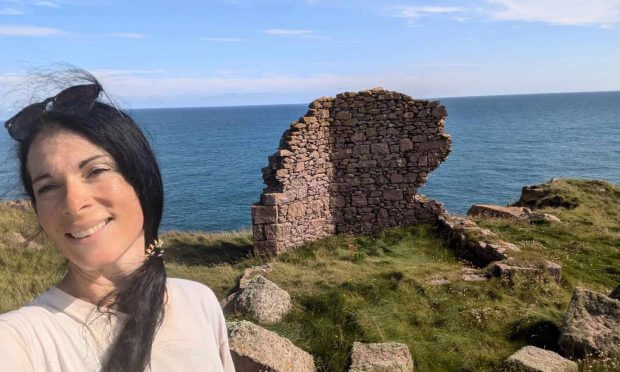
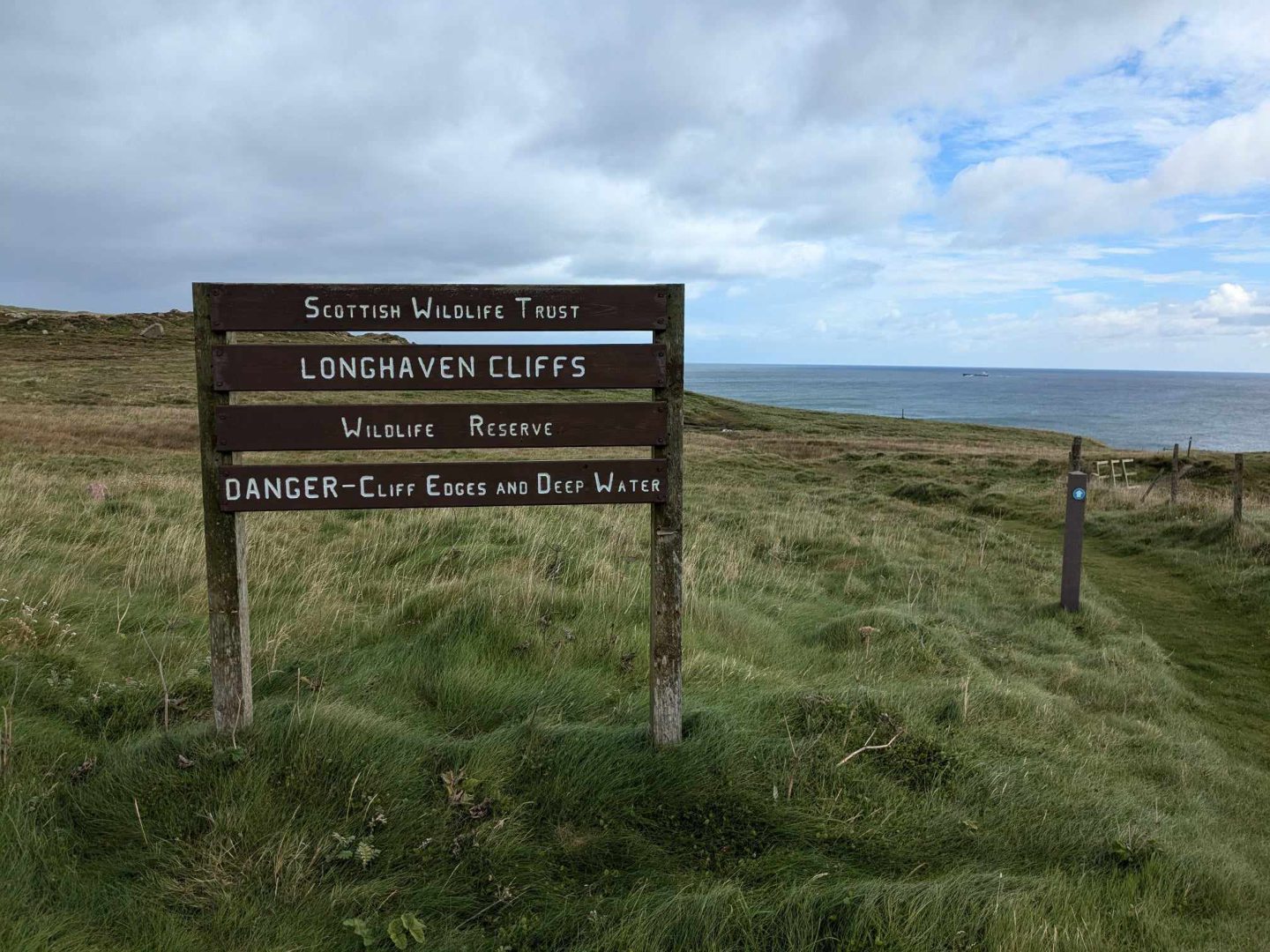
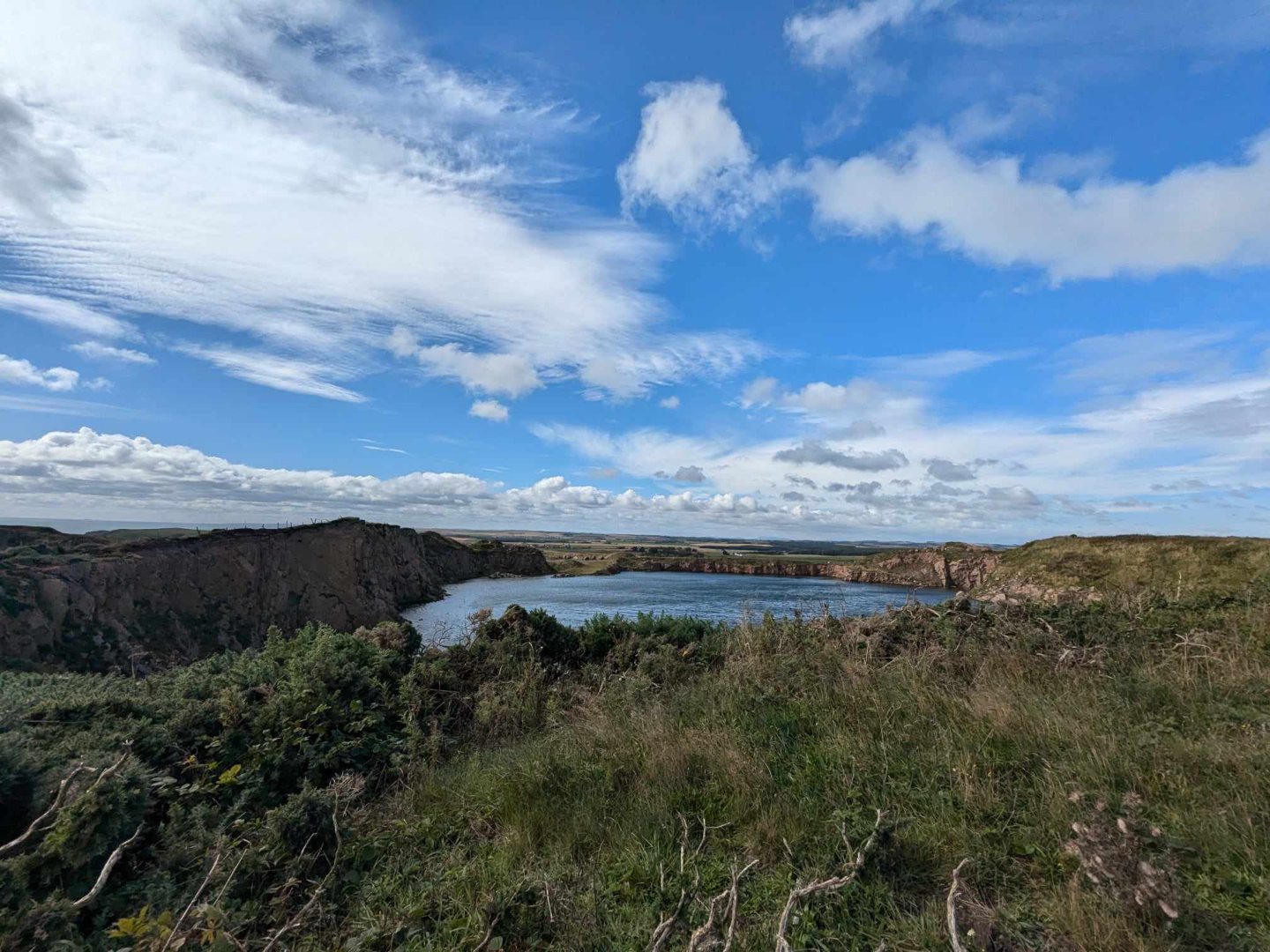
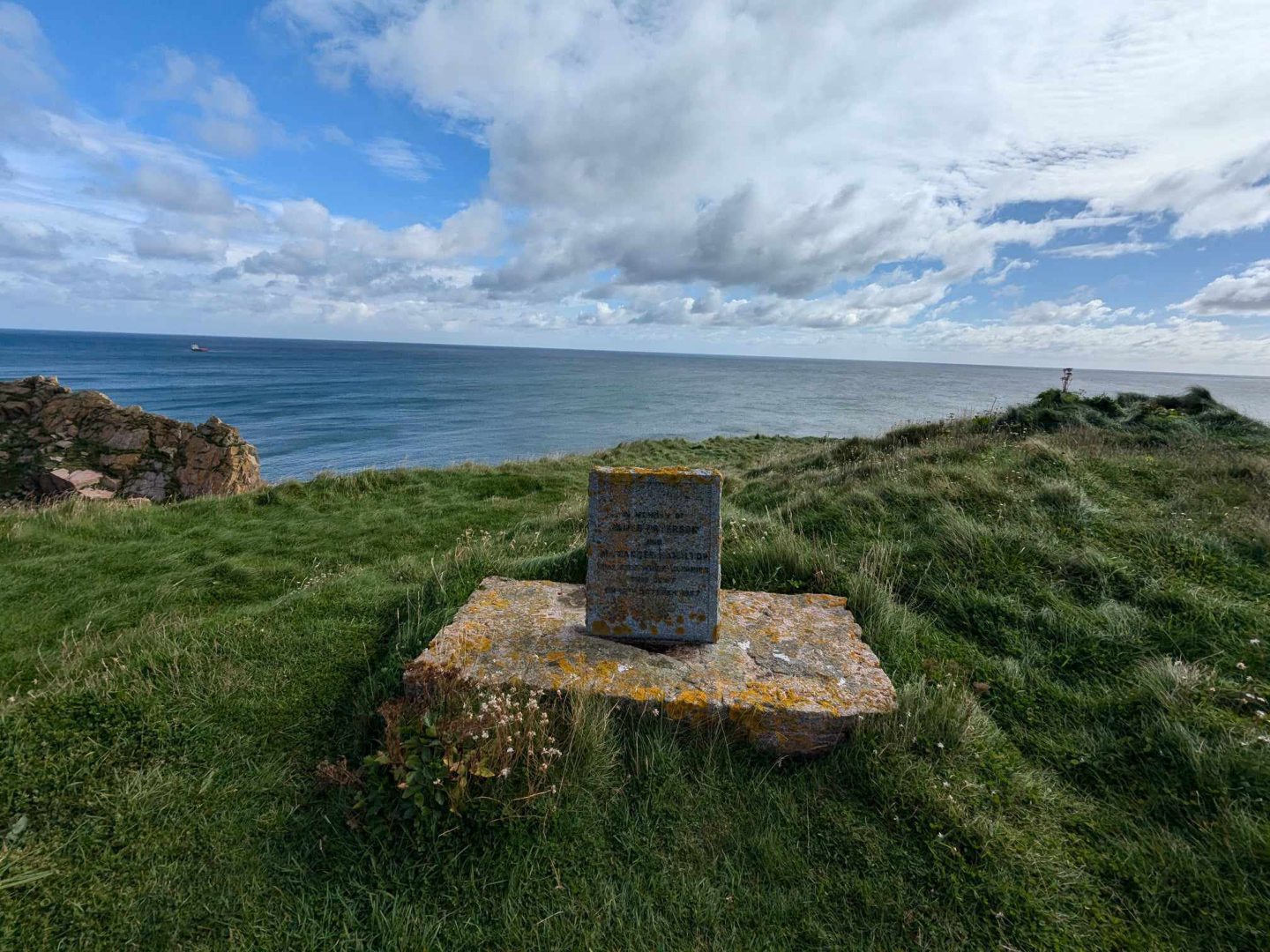
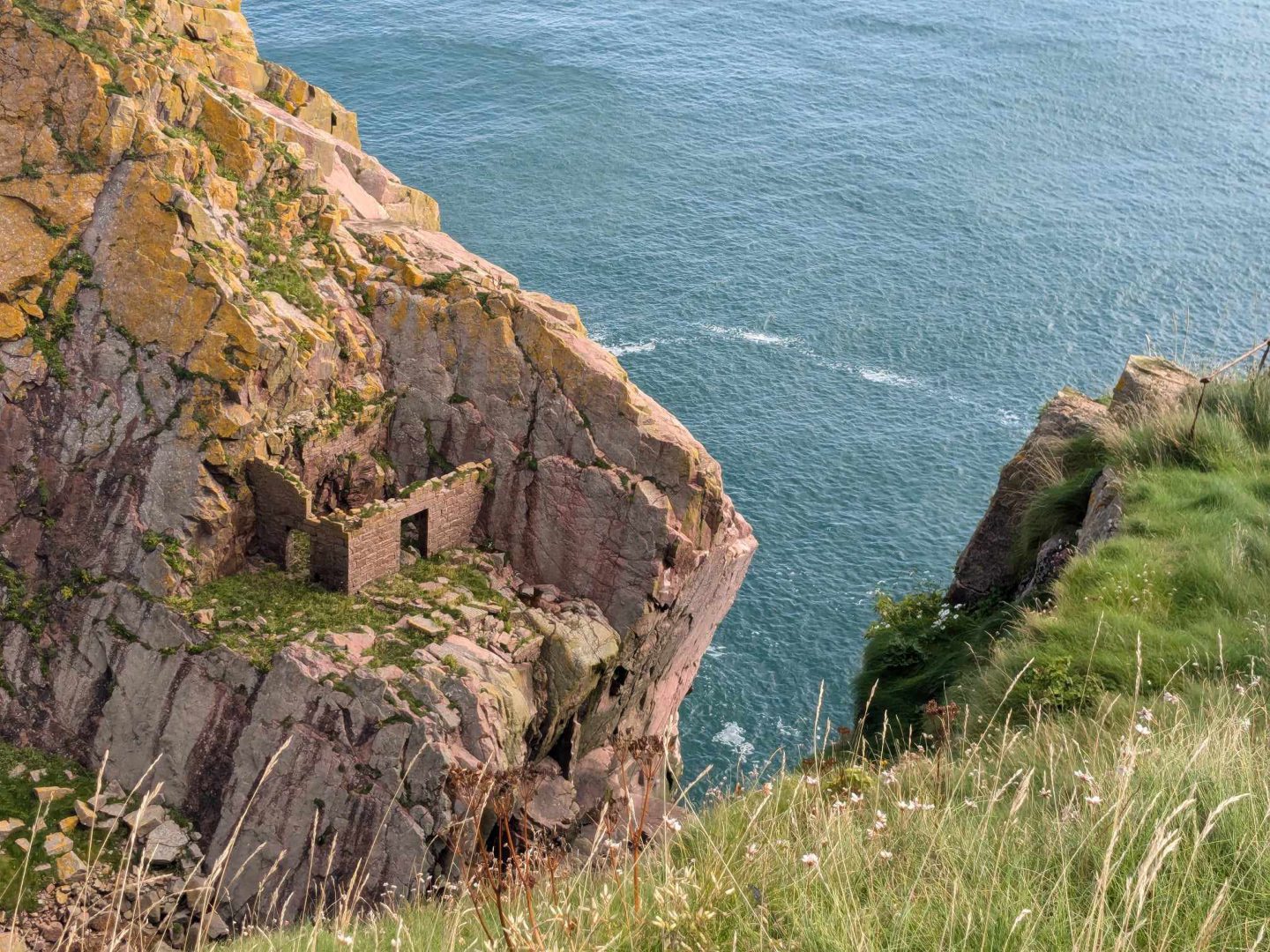
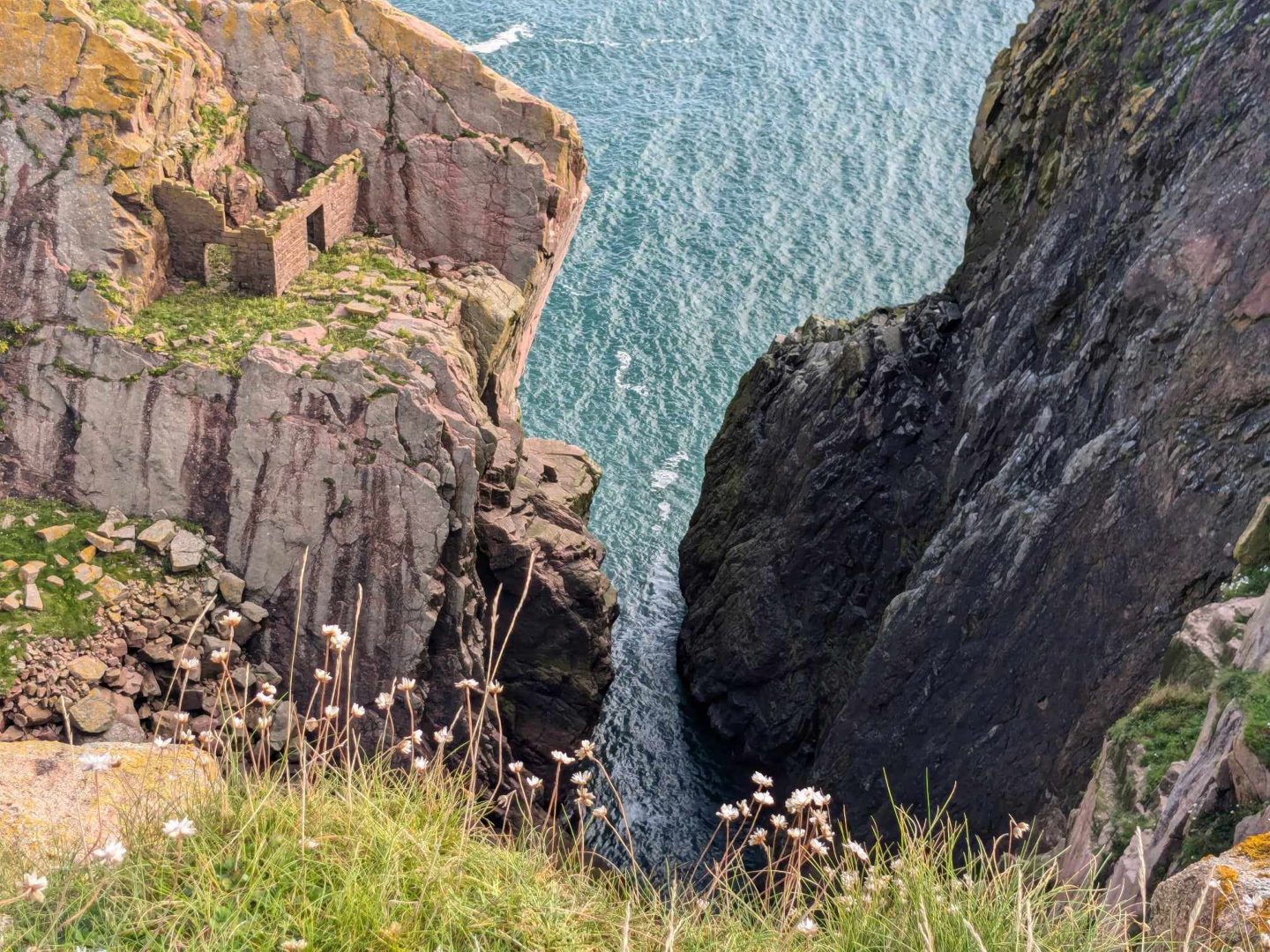
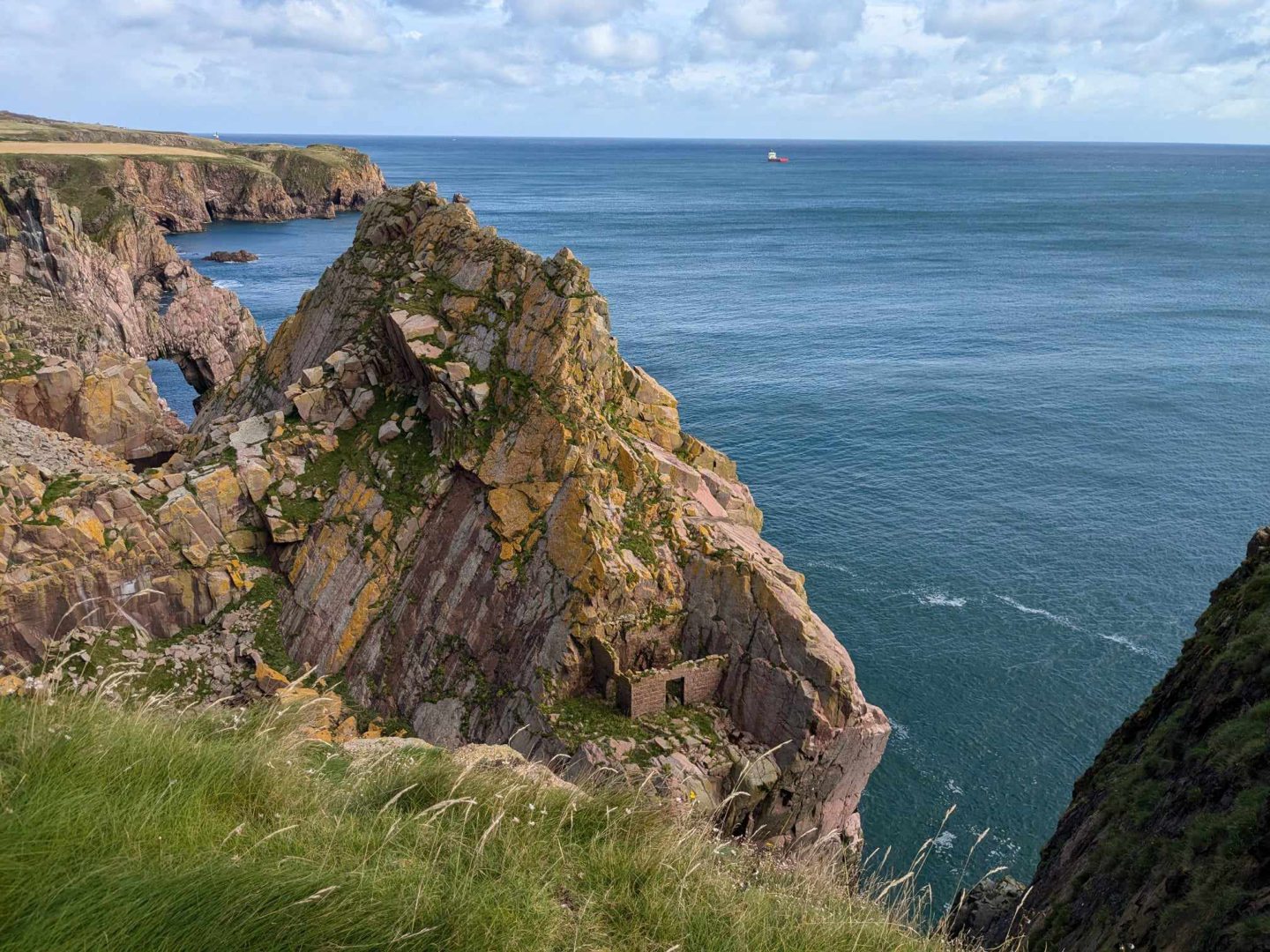
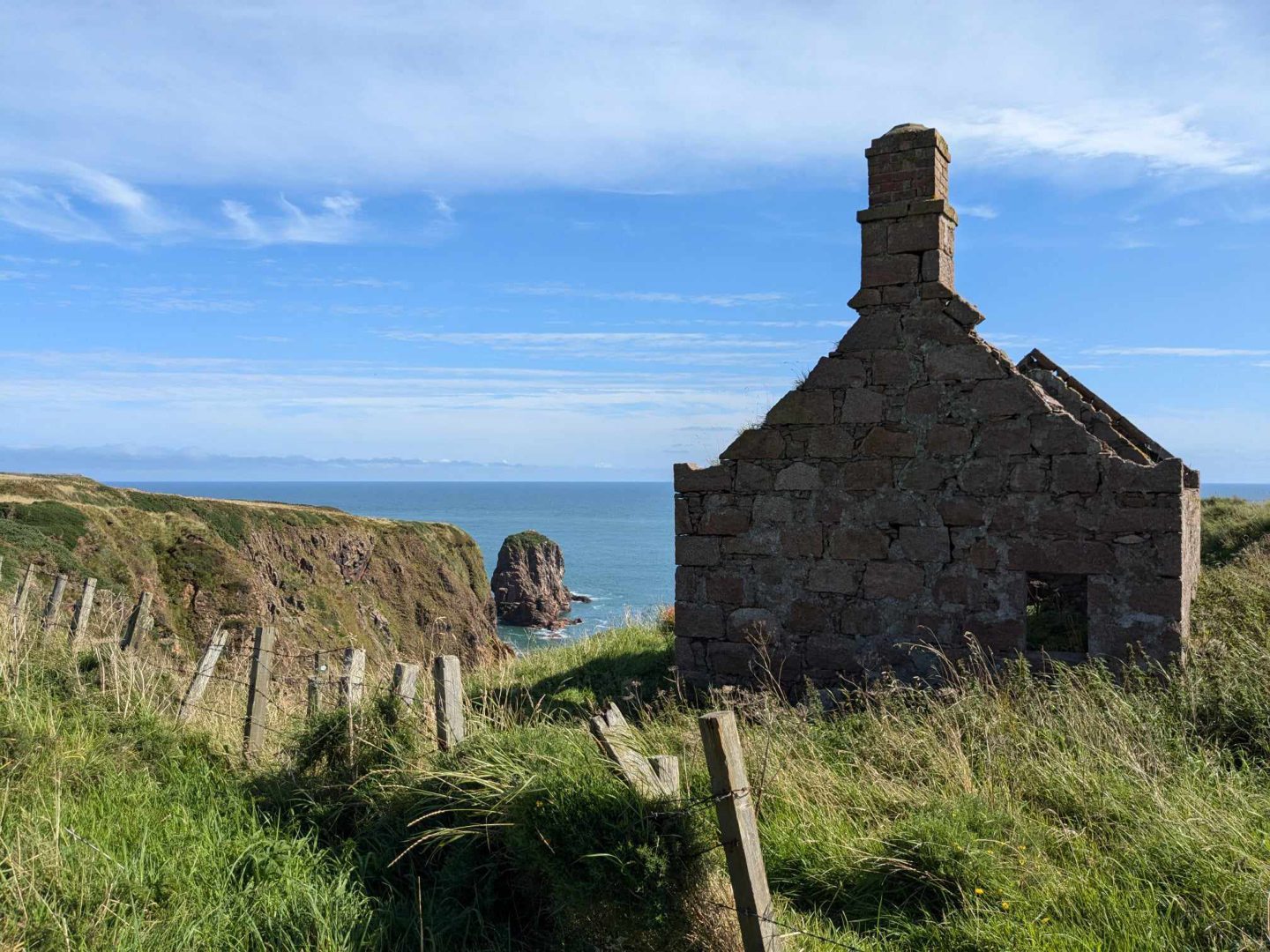
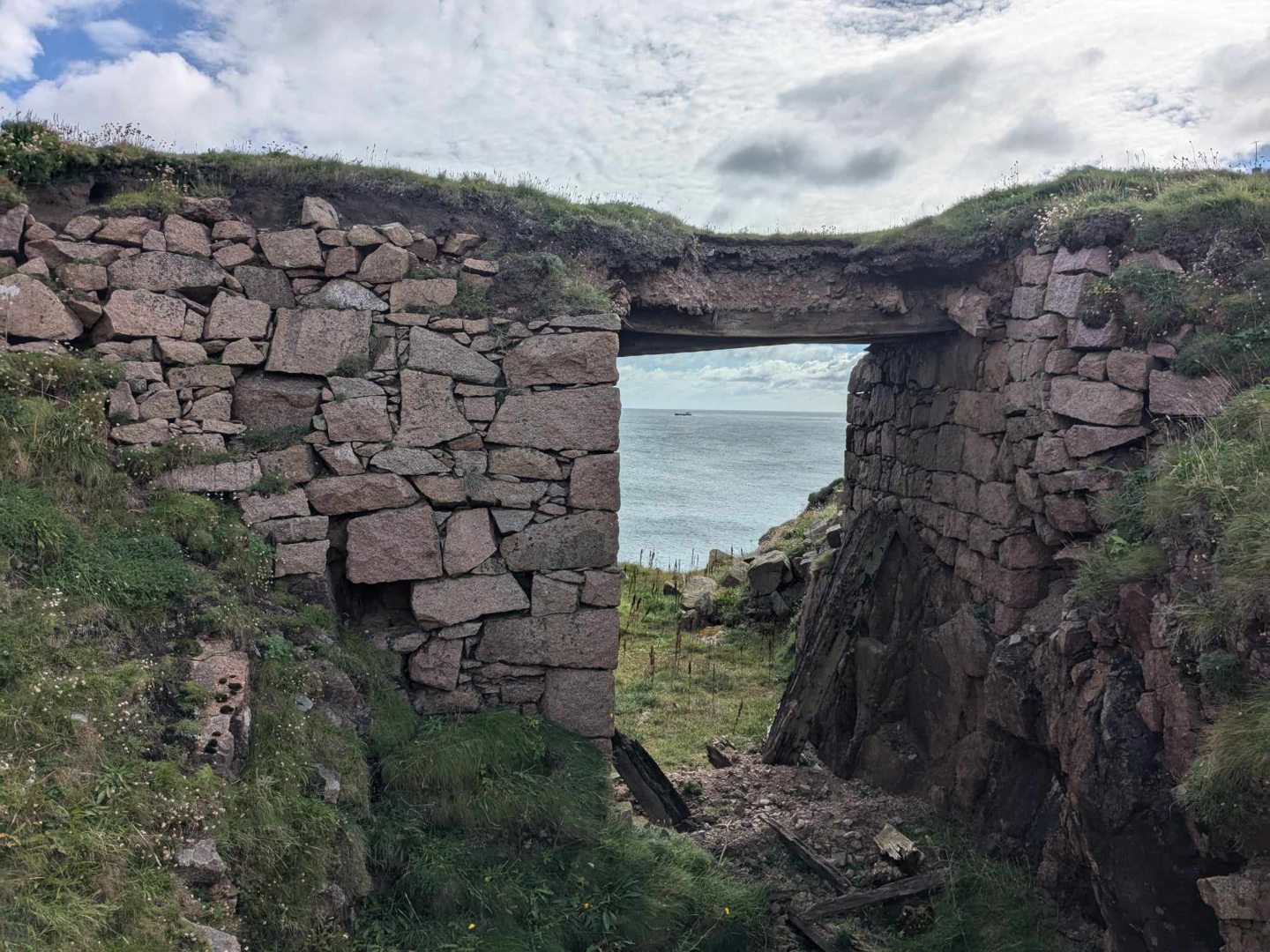
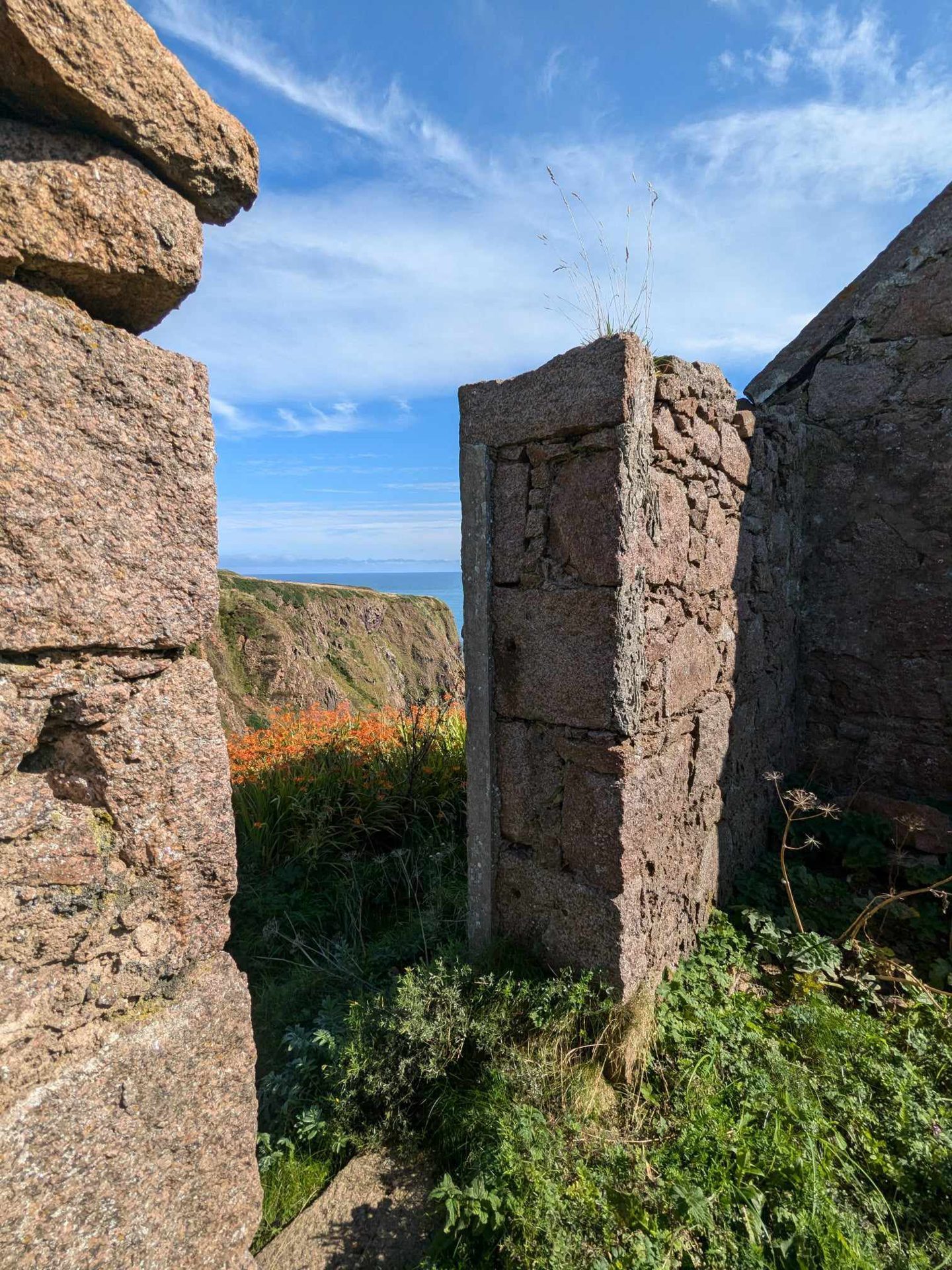
Conversation